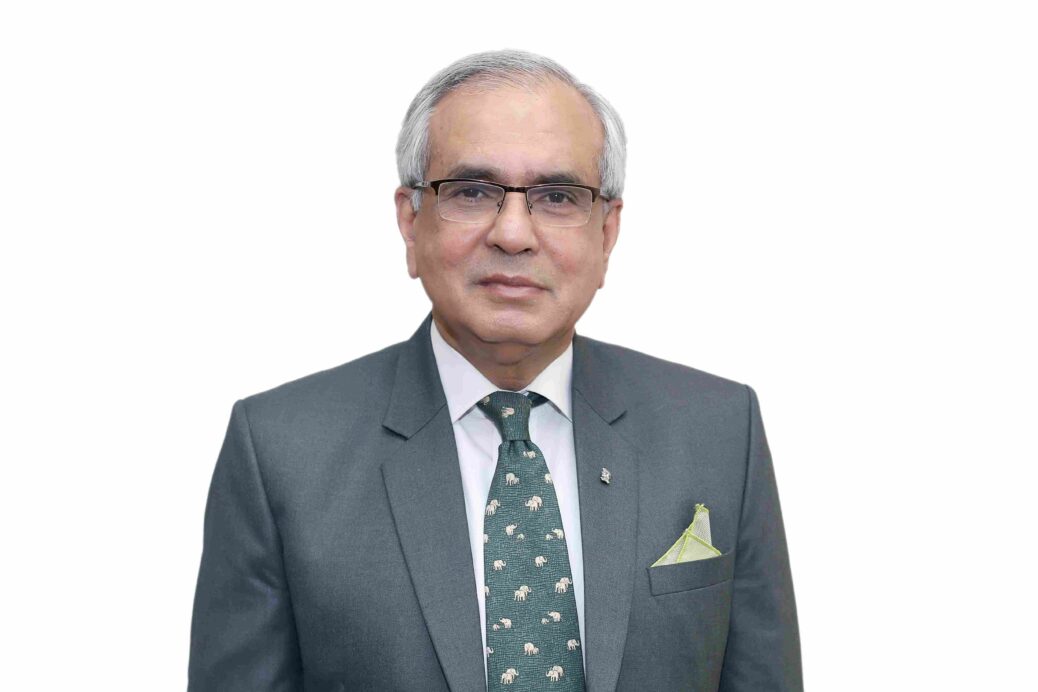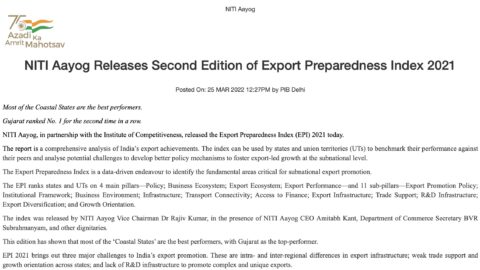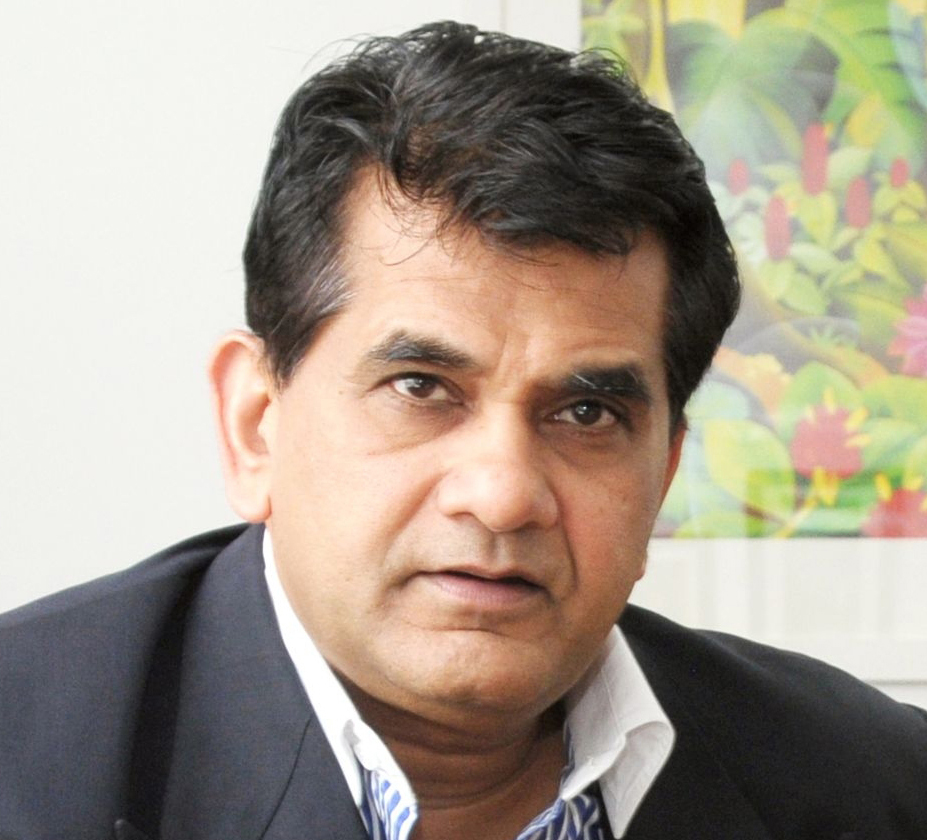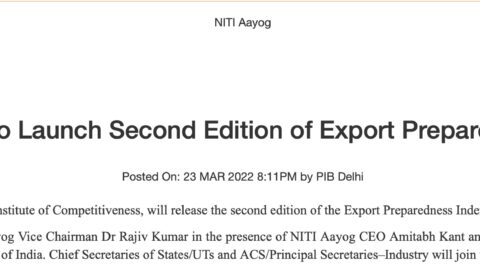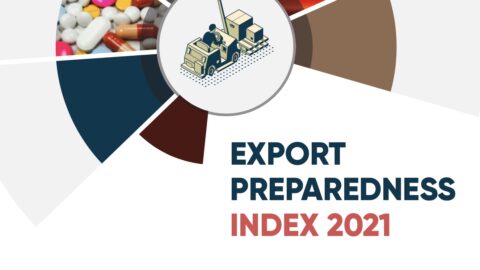Global Trade operating under the principles of comparative advantage plays a significant role in driving rapid economic growth of nations. Particularly for a developing country such as ours, exports remain an important engine of economic growth. Fortunately, after experiencing a lull period, India’s merchandise exports are expected to cross the USD 400 billion mark coming fiscal. In the period Apr 2021 to Jan 2022, India has exported USD 335.5 billion worth of goods. Moreover, compared to the same period last year, India’s overall exports of goods and services increased from USD 396.4 billion to USD 545.7 billion.
When global headwinds have been primarily negative, a significant rise of 38% Y-o-Y export growth rate is commendable. However, it is essential to be cautiously optimistic about our prospects. It is important to remember the supply chain shocks caused by the Covid pandemic, the war between Russia and Ukraine, and its negative externalities in the form of increased energy and commodity prices could at any time derail the global recovery process.
Despite the global factors, it is also heartening to see the success of our Hon’ble Prime Ministers’ economic Vision, Atma- Nirbhar Bharat. The increase in domestic manufacturing capacity and competitiveness is helping India’s exports grow at a record pace. Organic Chemicals – 24.7%, Vehicles other than railway or tramway – 36.8%, Electrical machinery – 47.9% and Apparel & clothing (knitted or crocheted) – 34.7% and Iron & steel – 106.3% are some of the sectors with significant export growth rates this year. Most importantly, India’s mobile phone exports, which were non-existent till a few years ago, have reached USD 4.14 billion this year. This is a testament to the success of the economic vision of the Hon’ble Prime Minister.
While the Central Government plays an active role in enhancing India’s exports, it is also essential for the State Governments to actively strategize their industrial policies to achieve more significant exports. The top six states in India – Maharashtra, Gujarat, Karnataka, Tamil Nadu, and Telangana contribute 75% of India’s overall exports. Moreover, the State Governments have the predominant role in the allocation of factors of production – land, labour, electricity, water, infrastructure, etc. Therefore, India’s export policy has to be more decentralized and state-specific. NITI Aayog recognizes this fact and released an Export Preparedness Index (EPI) starting last year to enhance a sense of competition between States and encourage them to adopt export promotion policies.
The EPI identifies several opportunities and challenges in the export sector at the State level. The index categorizes States and Union Territories under Coastal, Land Locked, Himalayan States, and UT/City-States. This classification has enabled a comparison between similarly placed States and across States. The EPI reviews the export policy, business ecosystem, export ecosystem, and export performance of all the States and also provides policy suggestions for future implementation.
I want to congratulate the entire team of NITI Aayog, Central Ministries, State Departments, and our Knowledge partner, Institute for Competitiveness, for bringing out EPI-2021. The policy objective of this exercise is to increase India’s share of Global Exports of both goods and services. I hope this Report will help in formulating export promotion policies while at the same time promoting the spirit of cooperative federalism.

